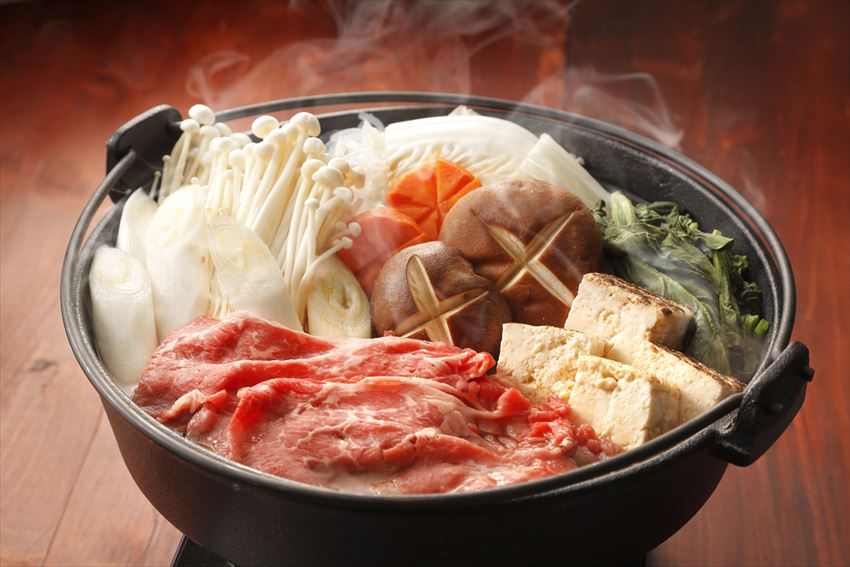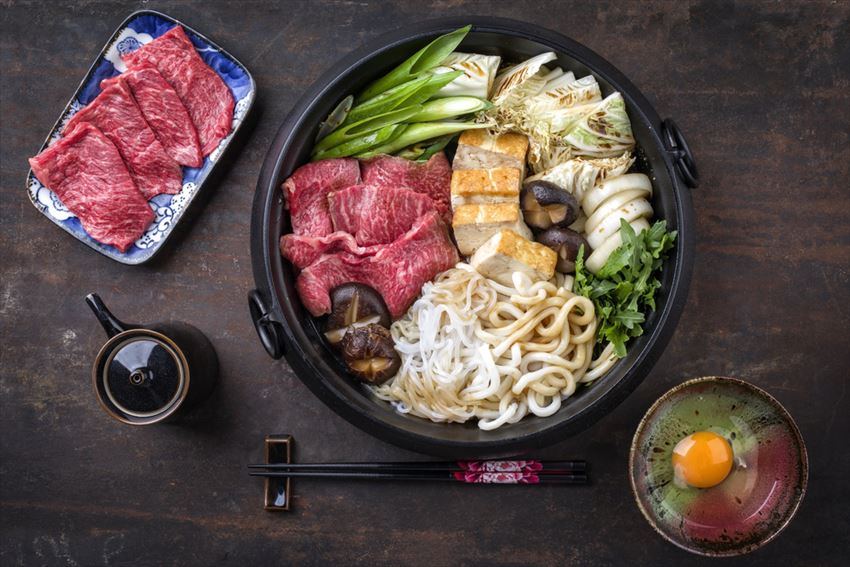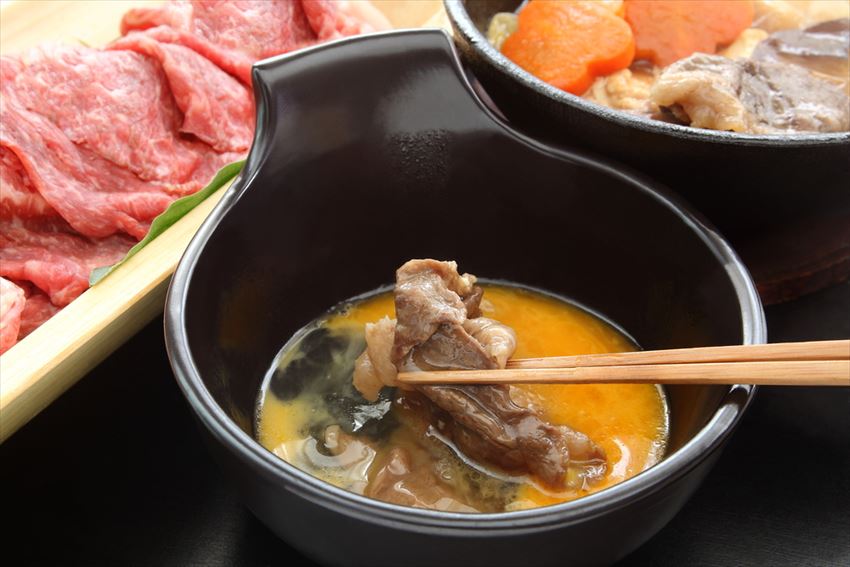"Sukiyaki" is a hot-pot dish that boils ingredients such as beef, green onion, Chinese cabbage, Japanese chrysanthemum, and mushrooms in a shallow iron pot and then dip with raw eggs. Just like Sushi and Tempura, it is a well-known traditional Japanese food. Japanese eat Sukiyaki especially during the cold winter nights. Of course, they also eat the dish at Sukiyaki specialty restaurant. Today, we will introduce the history of Sukiyaki and the proper manners of eating Sukiyaki.


The history of the word “Sukiyaki” is from a hoe (suki) which been used to eat Sukiyaki
We have to trace back to Edo period for the history of Sukiyaki. Back in the olden days, Japanese are prohibited to eat the meat due to the teaching of Buddhism. However, some ordinary residents had been eating boars, deer, and duck meat stealthily. Since they don’t have any pot during that era, they were said to use the hoe (suki) to heat up (yaki) the food. This is how the word of Sukiyaki came from.

The culture of eating meat was encouraged during the Meiji Restoration and therefore Sukiyaki spread to more ordinary residents
During the Meiji Era, followed by the civilization the Emperor started to emphasize the importance of eating meat, and encourage the culture of eating meat. There are few version of histories relating to Sukiyaki. One of them is the restaurant who founded Sukiyaki is "Isekuma", an Izakaya at Yokohama. In 1862, the restaurant was initially divided into two, which half of the restaurant have been used to serve beef Sukiyaki. During that time, some of the Japanese were still reluctant to eat beef, therefore the chef will cook the dishes outdoor. Same goes to the seating arrangement, the customers would dine at the outdoor garden. Besides, a Buddhist altar will be hung in the shop when the customer eat beef.

Tips to eat sukiyaki deliciously: do not overboil it!
The beef will harden easily when boiled. Hence, it is important to avoid overboiling the beef when eat Sukiyaki. Take out the beef at the timing between before and after the beef colour change, and dip into the raw egg immediately. Soup wise, it is better to maintain between the range of 65 to 75 Celsius with a bit steam, instead of keep boiling the soup at maximum heat. There are restaurants where the staff will serve everything to you, but there are also restaurants where you are expected to get your own pot and ingredients, which are prepared for you.
Comments